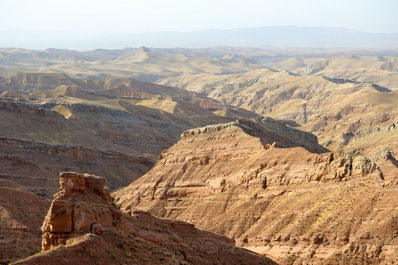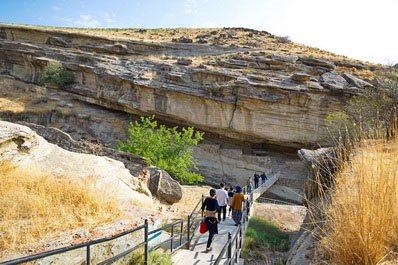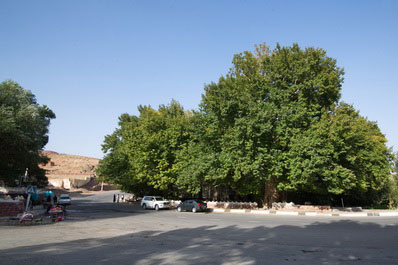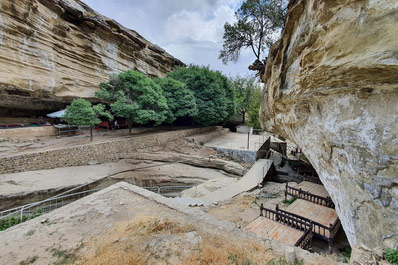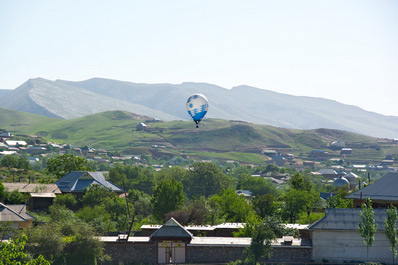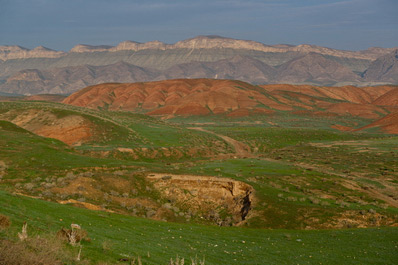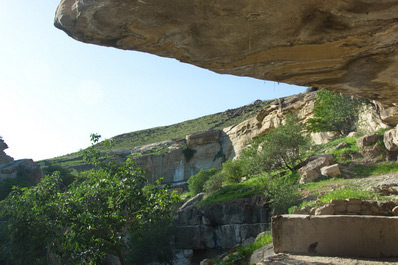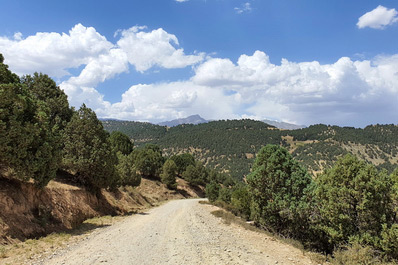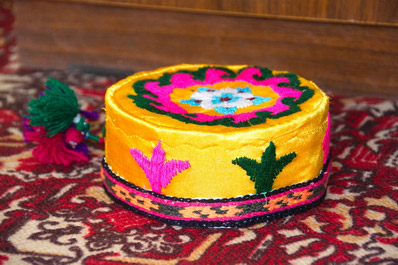Boysun Travel Guide
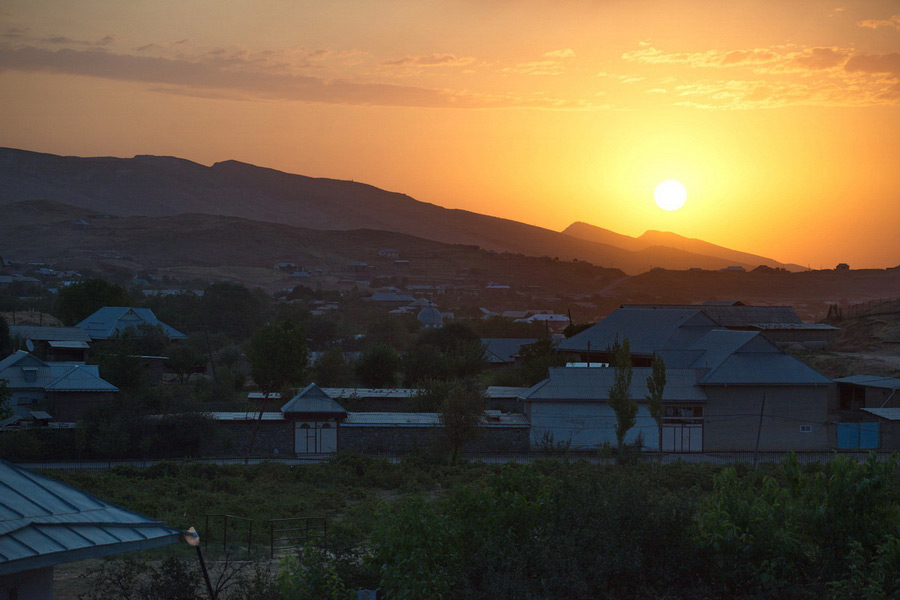
Founded: 1975
Regions: Surkahdarya
Elevation: 1217 m
Official language: Uzbek
Population: 23 700 (2005) - ru.wikipedia.org
Time zone: UTC+05:00
Phone code: +998 76
Zip code: 1904XX
Automobile codes: 75—79
Boysun, nestled near the Hissar mountain range in Surkhandarya province, is small but mighty in terms of its contribution to science. It's well-known globally due to the discovery of Neanderthal remains, making Uzbekistan one of the 22 countries worldwide where such significant archaeological finds have occurred.
The Boysun district’s cultural space gained UNESCO heritage recognition in 2001, and by 2008, it had earned a spot on the UNESCO representative list. This recognition highlights the unique lifestyle of the local people, who have successfully preserved their indigenous culture. The community continues to practice their traditional rites, uphold their customs, and enjoy their local music. They also produce their own clothes and shoes, sewing or adding embroidery, and create their own ceramics. Essentially, they handcraft everything needed for their daily lives.
How to Get to Boysun
While Boysun doesn’t have a direct air service, you can reach this hidden gem by car from Termez, a journey of around 141 km or just over 2 hours. Flights from Tashkent, Moscow, and St. Petersburg arrive in Termez. Additionally, Boysun is accessible via train from various cities, including Tashkent, Termez, Samarkand, and Karshi. Alternatively, you can opt for a private cab to reach Boysun.
Is Boysun Safe?
Boysun is a safe destination, day or night. Feel free to stroll through even the dimly lit streets without worry. However, it’s always wise to keep an eye on your personal belongings - just common-sense safety. If you’re visiting during the summer, remember to pack sunscreen and a hat. The heat in Boysun can be intense, making phrases like “it’s so hot you could fry an egg on the sidewalk” seem literal.
Brief History of Boysun
Boysun has a storied history, gaining international fame with the discovery of Neanderthal remains in the Teshik-Tash cave. The nearby Kugitang Mountains also house Mesolithic-era wall paintings. Some scholars, like academician Edward Rtveladze, even speculate that Roxana, Alexander the Great’s wife, hailed from this region, possibly having their wedding in the village of Derbent, close to Boysun.
The Iron Gate, a mountain pass in the Baisuntau Mountains, has been mentioned in various historical documents from China, Persia, Central Asia, and Europe during the Middle Ages. While Boysun was a kishlak (village) in Soviet times, it wasn’t until 1975 that it received city status.
Boysun Sights & Attractions
Boysun’s main draw is the Teshik-Tash cave, where a Neanderthal girl’s remains were discovered in the 20th century. After initial mistakes identifying the remains as a boy's, scientists have since corrected this error.
Not far from Boysun, the Surkhan Nature Reserve, one of Uzbekistan's seven, spans 245 square kilometers and houses a variety of animal and bird species, with 18 of them listed in the Red Book of Uzbekistan. The reserve also holds 39 Red Book plant species, dinosaur footprints, and ancient rock paintings.
You can explore ancient petroglyphs in the Zarautsai Gorge (Zaraut-Sai), believed to date back to the Neolithic and Mesolithic eras. The fortress of Kurganzol, dating back to the era of Alexander the Great, was unearthed in 2003 during an archaeological expedition, confirming that the Macedonian had founded this fortress in the 4th century BC.
22 kilometers from Boysun lies the village of Omonkhona, home to a spring of the same name, believed to have healing properties. According to local lore, Alexander the Great left his wounded soldiers here, only to find them healed upon his return, thanks to the spring’s water. To this day, the water is said to cure ailments related to the stomach, kidneys, and liver, and even hepatitis.
Don’t miss the Boysun Crafts Revival Center and the Boysun Museum of National Applied Art, where you can admire ancient collections of embroideries, textiles, and much more.
Trips to the Red Canyon (Kyzyl Canyon), just 3 km from Boysun, are gaining popularity. Comparable to the Grand Canyon in the USA, the Kyzyl Canyon offers otherworldly landscapes, especially outside the blooming spring season. For the adventurous, a climb to the highest point of the canyon, Mount Buritaht, standing at 1218 meters above sea level, is a must.
Lastly, for those intrigued by unusual phenomena, a specific section of the mountain road here defies logic - water poured on the asphalt flows upwards, and cars left in neutral appear to roll uphill.
Shopping in Boysun
Boysun is renowned for its skilled artisans, who create a wide array of goods ranging from woven carpets and intricate embroidery, to ceramics, as well as wooden and leather souvenirs. However, it's the Baisun hand embroidery that truly stands out, capturing the hearts of both locals and visitors across Uzbekistan. You'll find a stunning selection of embroidered items such as napkins, shawls, runners, tablecloths, prayer mats, tea bags, belts, and two distinct types of suzane: the “oi” with its circular rosettes, and the freely composed designs. Each piece is a labor of love, meticulously crafted over several days, which is reflected in the price. What's more, every item is utterly unique – you won’t find any two patterns that are exactly the same.
Make sure to take home a piece of janda fabric or ready-made products crafted from it – a speciality of Baysun. This cotton fabric features a unique weave with two differently colored weft threads and is dyed by hand, giving it a distinctive look.
Don’t miss out on the chance to own a hand-embroidered Boysun skullcap, with each piece being one-of-a-kind.
The local artisans also create stunning jewelry, with the most popular items being rings, bracelets, and earrings, all showcasing the traditional Uzbek style.
Keep an eye out for the handmade carpet bags from Boysun. They’re essentially small woolen rugs transformed into stylish bags.
If you’re fortunate enough to find a suzane featuring deer and women embracing them, count yourself lucky. This particular design has been a tradition in Boysun for almost 70 years, and while it is rarely sold, it is often given as a precious gift.
Best Time to Visit Boysun
Planning a trip to Boysun? The ideal times to visit are from mid-March to early June and from September to November. While summer visits are possible, be prepared for the heat – it can get extremely hot during this time.


